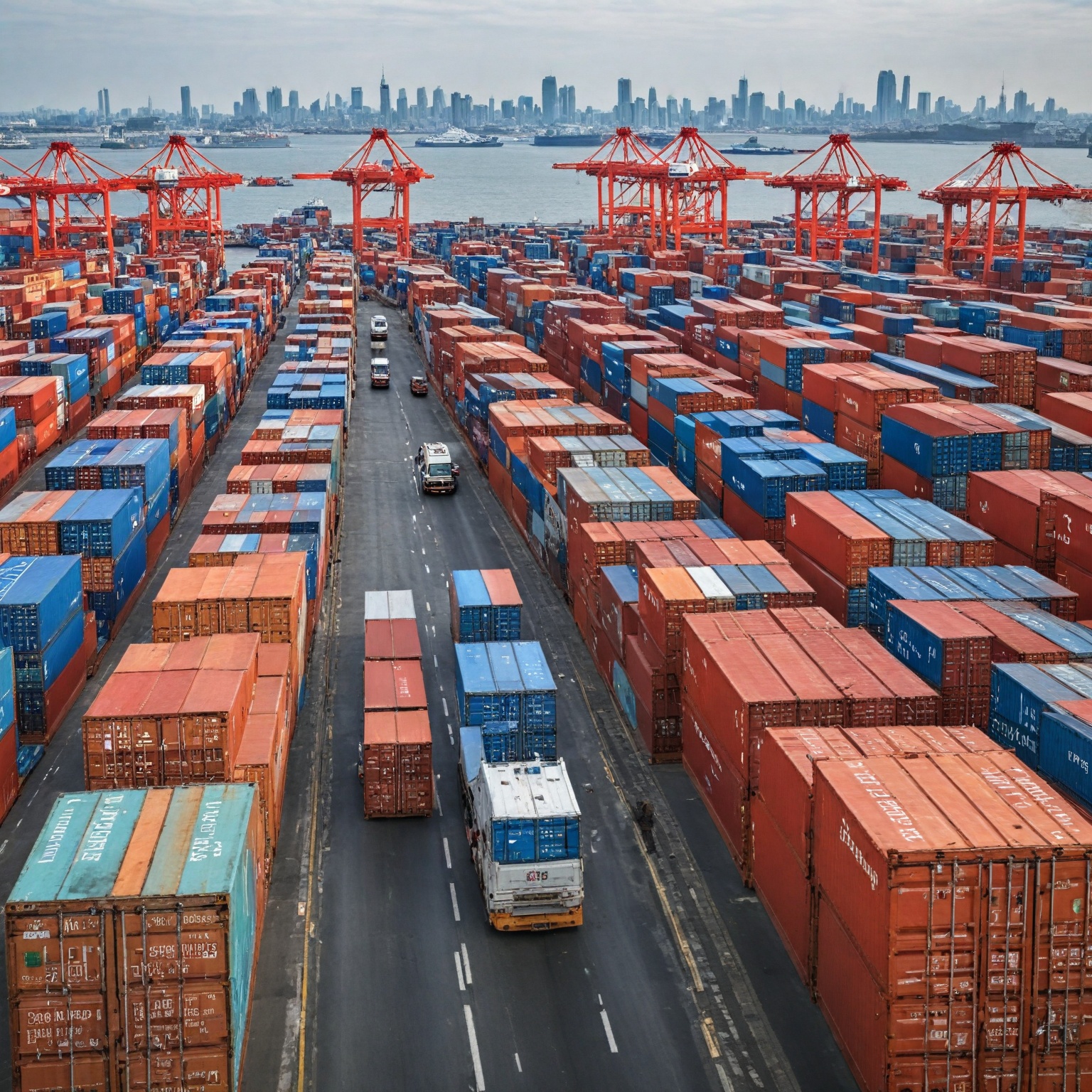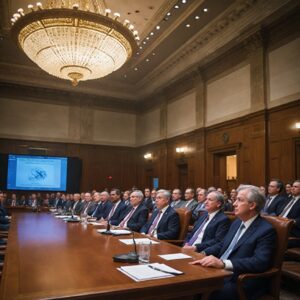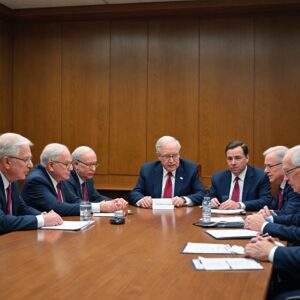Highlights:
– The US-China trade relationship has experienced significant tensions, leading to strategic responses from China, including diversifying its trade relations with other nations like Japan and South Korea.
– China's proactive approach to the US tariffs involves not just seeking new markets in Europe, Southeast Asia, and Africa but also collaborating with other countries like Japan and South Korea to strengthen its global economic position.
– China's trade diversification, spurred by increasing labor costs and the need for supply chain resilience, is part of a strategic move to navigate the challenges posed by US tariffs and shape global trade dynamics.
Summary
The trade relationship between China and the United States has become increasingly strained, particularly during Donald Trump’s second term as president when the US implemented tariffs on imports from China. The aim of these tariffs was to protect domestic industries, address trade imbalances, and ensure national security, with a particular focus on China . In response to the US tariffs, China has implemented economic strategies including a large stimulus package and the development of non-tariff measures. It’s also been noted that China is utilizing its significant market size to apply economic pressure on the US and diversify its commodity imports .
Simultaneously, China has been expanding its trade relations with other nations, notably Japan and South Korea. These Asian countries, despite their contentious relationships, heavily rely on trade partnerships with the US. The recent imposition of 25% tariffs on car and auto parts imports by the US presents significant challenges to these Asian exporters . China’s responses have strategic implications on global economic dynamics and trade relationships .
In light of the US tariffs, China has embarked on the path of trade diversification, establishing new markets such as Europe, Southeast Asia, and Africa. This move is referred to as the “rat race”, indicating intense competition among exporters. This diversification process, although influenced by US-China trade tensions, was already underway due to increasing labor costs in China and the need for supply chain resilience.
Moreover, China’s response to the new US tariffs has been characterized by collaboration with other countries. With an aggressive stance towards the US tariffs, China has bolstered its trade relations with other countries, in particular, South Korea and Japan. This strategic move aims to sustain China’s global economic position in response to the US tariffs. The full economic and trade implications of China’s response strategies are yet to be seen but are expected to shape the macroeconomic state of the country and global trade relationships significantly .
Historical Context
The historical context of China’s response to new US tariffs stems from its long-standing economic alliance with North Korea, which has continued from 1992 until the present . This alliance has shaped the economic landscape, with modern developments in China’s relationships with both North and South Korea influencing global trade strategies .
In the United States, the emergence of new import patterns from China has led to an evaluation of supply diversification strategies . This substantial change has provoked an exploration of whether these alterations are due to attempts to reduce risks from limited supply diversification or primarily driven by a desire to decrease imports from China . An analysis of industry-specific changes has revealed possible reasons for China’s loss in market share, further expanding the literature on trade diversion effects .
Despite the imposition of US tariffs, China has remained resilient. As noted by Wang Wen, dean of Renmin University’s Chongyang Institute for Financial Studies, China has adapted to US tariffs over the past seven years, and these high tariffs have not led to a decrease in the US-China bilateral trade volume or China’s trade surplus with the US .
The trade relationship between the US and China has been subject to increasing tension. In recent years, meetings have taken place between the two nations aimed at preventing competition from escalating into conflict . However, the resurgence of “America First” trade policies, particularly during Donald Trump’s second term as president, led to the implementation of tariffs as a primary instrument of US trade policy. The aim of these tariffs was to protect domestic industries, address trade imbalances, and ensure national security, with a particular focus on China . Despite the escalating protectionist trade policies, China’s response to the heightened tariffs has been comparatively modest .
China’s trade relations with other nations, particularly Japan and South Korea, have also significantly impacted its economic strategies. These three countries, despite their contentious relationships, heavily depend on trade partnerships with the US . Consequently, the recent imposition of 25% tariffs on car and auto parts imports by the US poses a significant challenge to these Asian exporters . The continued disagreements over territorial issues have also prevented these countries from making significant progress on a trilateral free-trade deal, which has been under discussion since 2012 .
China’s Economic Stimulus Response to New US Tariffs
In response to significant increases in US tariffs, China has implemented a number of economic strategies, notably focusing on a large stimulus package and the development of non-tariff measures. This response forms a key external challenge to China’s economy in 2025-26, with the potential to impact the macroeconomic state of the country significantly.
The stimulus package is projected to amount to Rmb4.1trn per year, or 3.2% of nominal GDP in 2023. It’s designed to help mitigate the negative impact of the tariffs on China’s economy. Real GDP growth is predicted to slow by 4.6% in 2025, 4.3% in 2026, and 4.1% in 2027. However, the impact of the stimulus package has been immediately noticeable, resulting in a surge in the CSI 300 index by 4.3 percent. It is also noted that more fiscal expansion is under consideration, with calls for an additional RMB 10 trillion (US$1.37 trillion) stimulus package.
China’s response has not been limited to domestic economic adjustments. Rather, it is also seeking to leverage its significant market size to inflict economic pressure on the US through non-tariff measures. These may include fast-tracking substitution for US products in areas including civil aviation and software, expanding export controls against the US to more strategic goods, and targeting its tariffs at US agricultural and energy commodities.
The response from China has been perceived as modest compared to the US measures. China’s tariffs have primarily targeted about $20 billion of US goods, compared to the US tariffs targeting about $450 billion worth of Chinese goods. This approach has been seen as an attempt by Chinese policymakers to engage Trump in talks to avert an outright trade war.
China’s economic stimulus package and non-tariff measures are part of the broader China+1 strategy. This strategy aims to diversify manufacturing operations across multiple countries to manage production costs and navigate geopolitical uncertainties. This has led to a change in the import patterns in the US, reducing their dependence on Chinese goods.
The success of these measures remains to be seen, with economic losses projected for both China and the US in light of the higher tariffs. However, China’s focus on non-tariff measures and stimulus packages demonstrates a strategic approach to managing the impact of the tariffs. The exact macroeconomic impact remains uncertain and is largely dependent on further tariff scenarios and the Chinese government’s continued response.
China’s Trade Diversification in Response to New US Tariffs
The new tariffs imposed by the US have become a part of the broader trade tensions involving the US and its trading partners, including China, Japan, and South Korea. As a result of these tariffs, China’s trade has expanded into alternative markets such as Europe, Southeast Asia, and Africa. However, Chinese producers have referred to this move to alternative markets as a “rat race”, resulting in price wars among exporters. This could potentially lead to deflationary forces in the world’s second-largest economy as firms continue to squeeze shrinking margins.
Trade Diversification
The process of trade diversification away from China has begun long before the escalation of US-China trade tensions. This was partly due to increasing labor costs in China. The process was further accelerated by the US-China trade dispute in 2018 and has been further hastened by the COVID-19 pandemic. Countries and multinational corporations have started to prioritize security and resilience over efficiency, adopting the so-called China plus one strategy. This strategy suggests diversifying business into other countries as a more economical and safer long-term option instead of investing only in China.
Impact on Global Trade Relationships
A study conducted on the changes in United States import patterns from China from 2017 to 2022 shows a significant diversification away from China. The study found that the extent of import diversification from China was of a larger magnitude and scope compared to other countries. It was observed that the decline in China’s market share across various sectors was majorly influenced by trade policy changes and industry characteristics.
China’s Collaboration with Other Countries in Response to New US Tariffs
The new US tariffs have elicited responses from several countries that have resorted to implementing countermeasures to safeguard their economic interests. In particular, China has demonstrated an aggressive stance in response to the US tariffs.
Trade Relations with Other Countries
China’s economic relations with the US have been tense due to the tariffs, however, the country’s bilateral trade volume and trade surplus with the US have not decreased. Instead, China has sought to bolster its trade relations with other countries including Japan, South Korea, and others involved in the US’s wide-ranging trade tensions.
### Collaboration with South Korea and Japan
China, South Korea, and Japan have made efforts to build a stable trade and investment environment in response to the new tariffs. Moreover, the three countries have participated in the Regional Comprehensive Economic Partnership (RCEP) and are in negotiations to establish a Korea-China-Japan Free Trade Agreement to further enhance trade cooperation among the countries.
China’s Key Trade Partners
China considers South Korea as a crucial trade partner and perceives it as the weakest link in the US alliance network in Northeast Asia. Also, the modern history of the China-North Korea alliance, from 1992 to the present, has been detailed in a report by the U.S.–China Economic and Security Review Commission.
Thus, China has strategically expanded its economic and trade cooperation with other countries in response to the US tariffs. This strategy is a part of China’s broader effort to respond to the US tariffs and maintain its global economic position.
Implications of China’s Response to New US Tariffs
The US trade policy under the current administration has seen significant shifts, with a heavier emphasis on tariffs as a strategic tool. This has caused considerable uncertainty, particularly as new and expanded tariffs have been placed on key trading partners such as China, Canada, Mexico, and the European Union.
Economic Impact
Predicted second-order effects on manufacturing investment and domestic consumer sentiment could further stifle economic growth. If the US imposes a threatened 60% tariff on China, it could lead to a loss of 2.5 percentage points in GDP growth from 2025 to 2027. Such an aggressive stance could mark a significant deterioration in US-China bilateral relations, leading to a likely response from China in the form of moderate and targeted tariff retaliation.
China’s Response
China is accustomed to US tariffs, as indicated by Wang Wen, dean of Renmin University’s Chongyang Institute for Financial Studies. High tariffs have not significantly reduced the bilateral trade volume or China’s trade surplus with the US. As a response to US tariffs, China has refrained from imposing equivalent tariffs and instead launched a limited anti-dumping investigation. The country is strategically well-positioned to diversify its commodity imports, increasingly replacing US goods with alternatives like Brazilian soybeans.
Global Implications
China’s growth rate is expected to increase slightly to 4.8 percent in 2024 according to the World Bank. While the current stimulus may not be sufficient for long-term economic growth, more aggressive fiscal expansion could be beneficial. The US, on the other hand, may see fewer benefits due to ongoing trade restrictions and technology export bans that have severed economic ties between the two nations. Countries with strong trade ties to China, especially in the Asia-Pacific region, stand to benefit the most. For instance, Australia may see increased demand for iron ore and other raw materials due to a potential recovery in China’s real estate sector.
### Long-term Implications
The drag on growth is expected to narrow from 2026 but is likely to persist until 2030. A potential stabilization in home prices in some large cities could occur next year with the implementation of housing easing measures, although a nationwide stabilization is unlikely. The wide range of possible GDP outcomes for next year emphasizes the uncertainty, particularly considering the potential for higher-than-expected tariffs from the US.
The content is provided by Blake Sterling, Financial Pulse Now


























